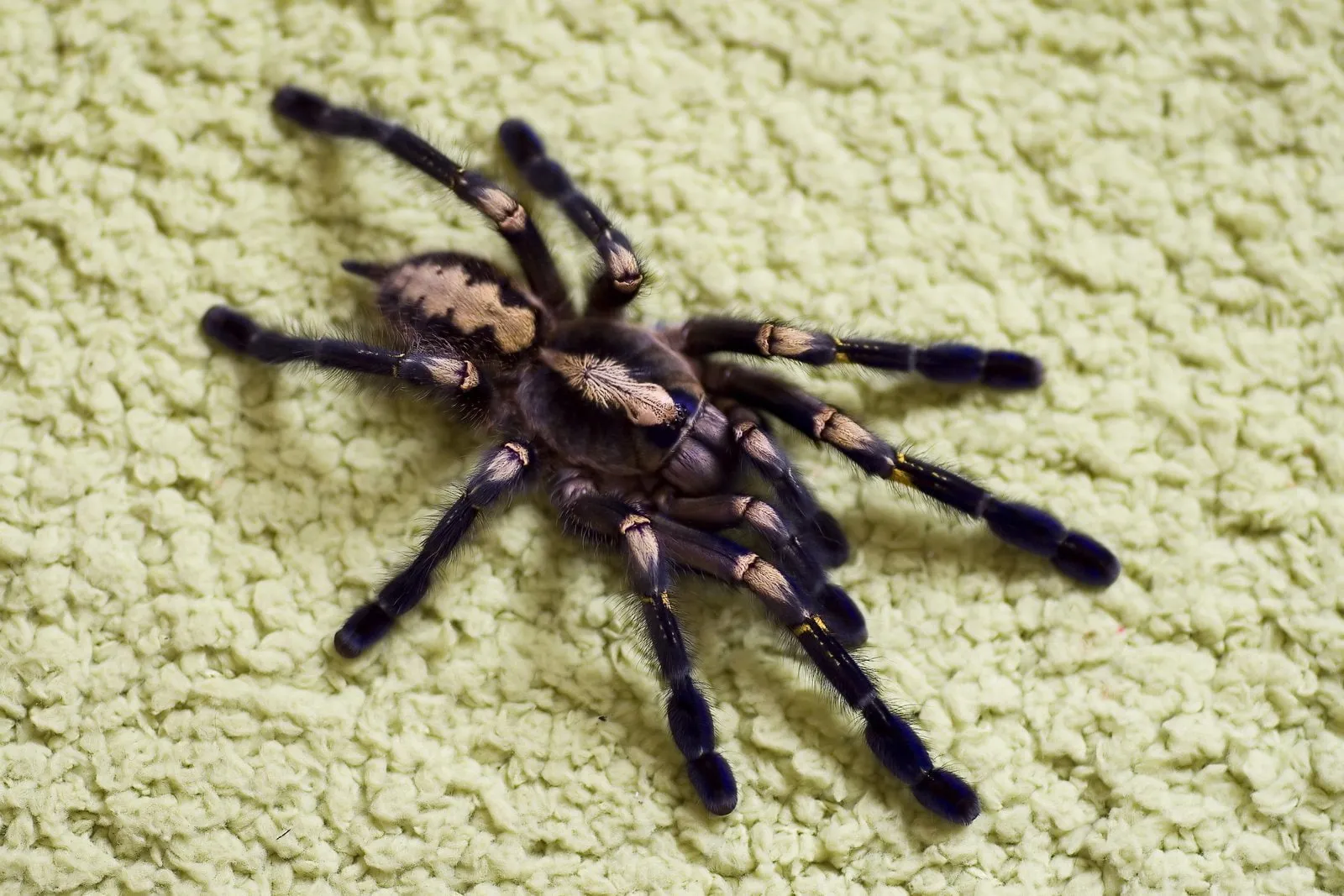What is a Gooty Tarantula?
The Gooty tarantula, scientifically known as Poecilotheria metallica, is a striking and highly sought-after arboreal tarantula species. Native to a small region of India, this spider is renowned for its vibrant metallic blue and grey coloration, making it a favorite among tarantula enthusiasts. Often referred to simply as the ‘Gooty,’ this species presents a unique combination of beauty and a moderate level of care difficulty, making it an interesting pet for those with some experience in tarantula keeping. Their unique appearance and the limited availability of this species in the wild contribute to their high value and allure among collectors and hobbyists. This article aims to provide you with key facts about the Gooty tarantula to help you understand this fascinating creature, whether you’re a seasoned arachnid aficionado or simply curious about these incredible spiders.
Appearance and Characteristics
The Gooty tarantula is easily recognizable due to its distinctive appearance. The combination of colors and patterns sets them apart from many other tarantula species. Understanding these features is crucial to appreciating the beauty and uniqueness of this species. The intricate details in its appearance are also a valuable part of identifying and appreciating a Gooty tarantula.
Size and Coloration
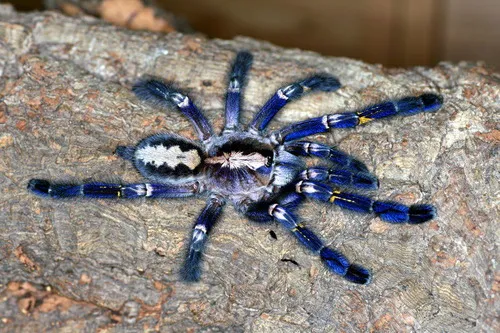
Adult Gooty tarantulas can reach a leg span of up to 7-8 inches, making them a medium-sized tarantula. The most striking feature is their coloration. The carapace (the top of the cephalothorax) is typically a metallic blue or silvery-grey, which gives the spider its specific name. The legs are often adorned with bands of grey and black, creating a beautiful contrast. The abdomen displays a pattern of grey, black, and sometimes a touch of yellow or orange, providing the spider with a stunning overall look. The precise color and intensity of the metallic sheen can vary depending on the spider’s age, molt cycle, and overall health.
Unique Features
Beyond its coloration, the Gooty tarantula has other distinctive features. Like other Poecilotheria species, they have a characteristic pattern of markings on their legs and bodies. These markings often include intricate patterns that vary slightly from one individual to another. The species is known for its arboreal lifestyle, spending most of its time in trees or elevated structures. The Gooty tarantula also has urticating hairs on its abdomen, which it can flick off as a defense mechanism, although it is less prone to doing so compared to some other tarantula species.
Habitat and Distribution
Understanding the natural habitat of the Gooty tarantula is essential for providing the best care in captivity. They have specific environmental needs that are crucial for their well-being. The location of their natural habitat also influences conservation efforts and our understanding of threats to this species. Researching their natural environment is a crucial part of understanding their needs.
Native Region
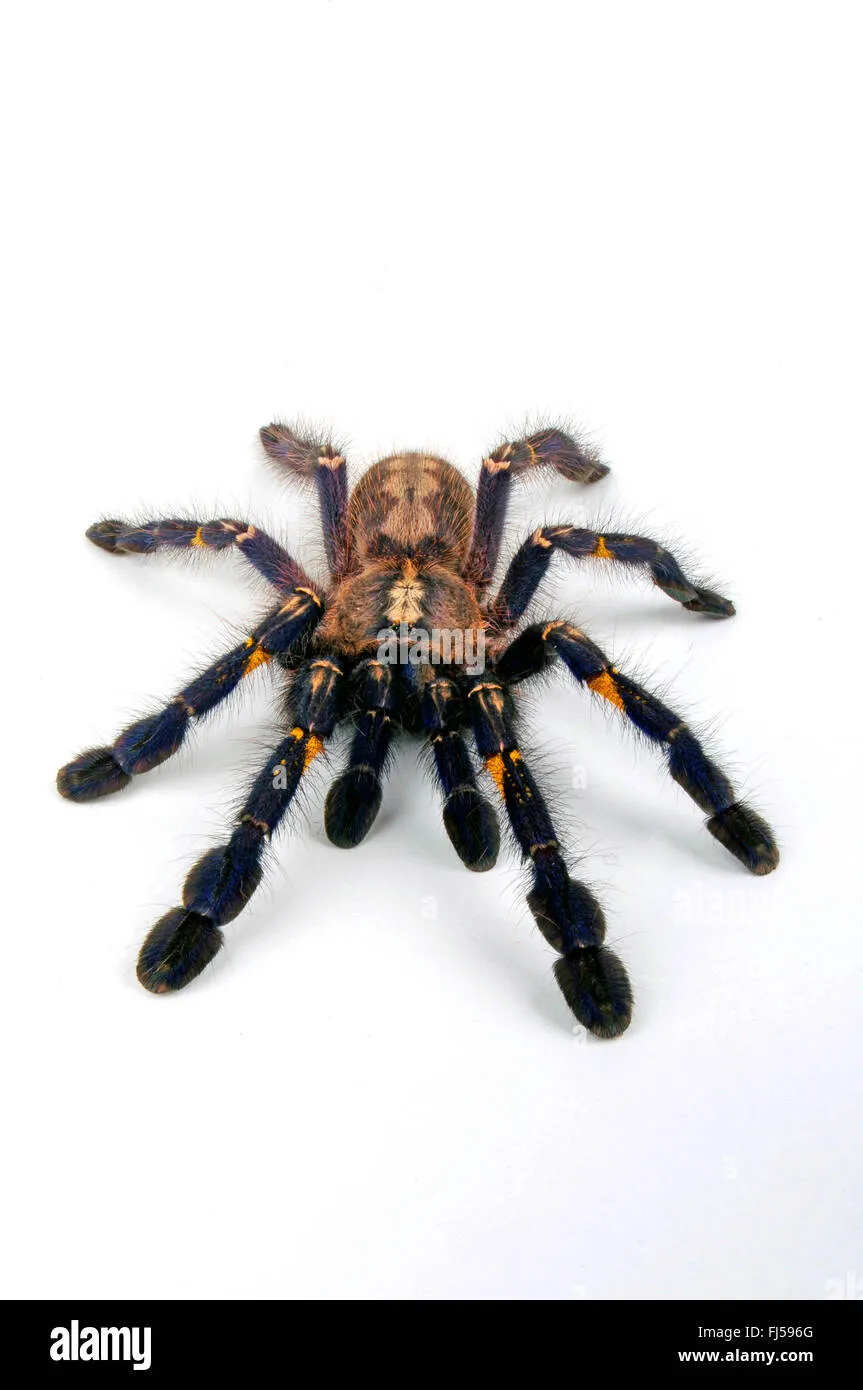
The Gooty tarantula is endemic to a very small area of Andhra Pradesh in India. Specifically, they are found in the Nandyal district, primarily around the Gooty region (hence their name). This restricted geographic distribution makes them a highly vulnerable species, as any environmental changes in their habitat could have a significant impact on their survival. Their limited presence in nature underlines the significance of preserving their natural ecosystem.
Preferred Environment
In the wild, Gooty tarantulas live in trees, favoring the bark and crevices where they can create webs. They are arboreal, which means they spend most of their time off the ground. They prefer warm and humid environments, similar to tropical regions. These spiders are nocturnal hunters, seeking prey during the night. The specific features of their habitat, such as tree types, humidity levels, and the presence of insects and other invertebrates, are all vital components for their survival in the natural ecosystem. The preservation of the environment is crucial for their continuous survival.
Behavior and Temperament
The behavior of the Gooty tarantula, like that of any species, plays a vital role in how we interact with and understand it. Knowing their temperament is crucial for responsible pet ownership and understanding their reactions. Their behavior provides important insight into their needs, and the measures we should take to ensure their well-being.
Defensive Mechanisms
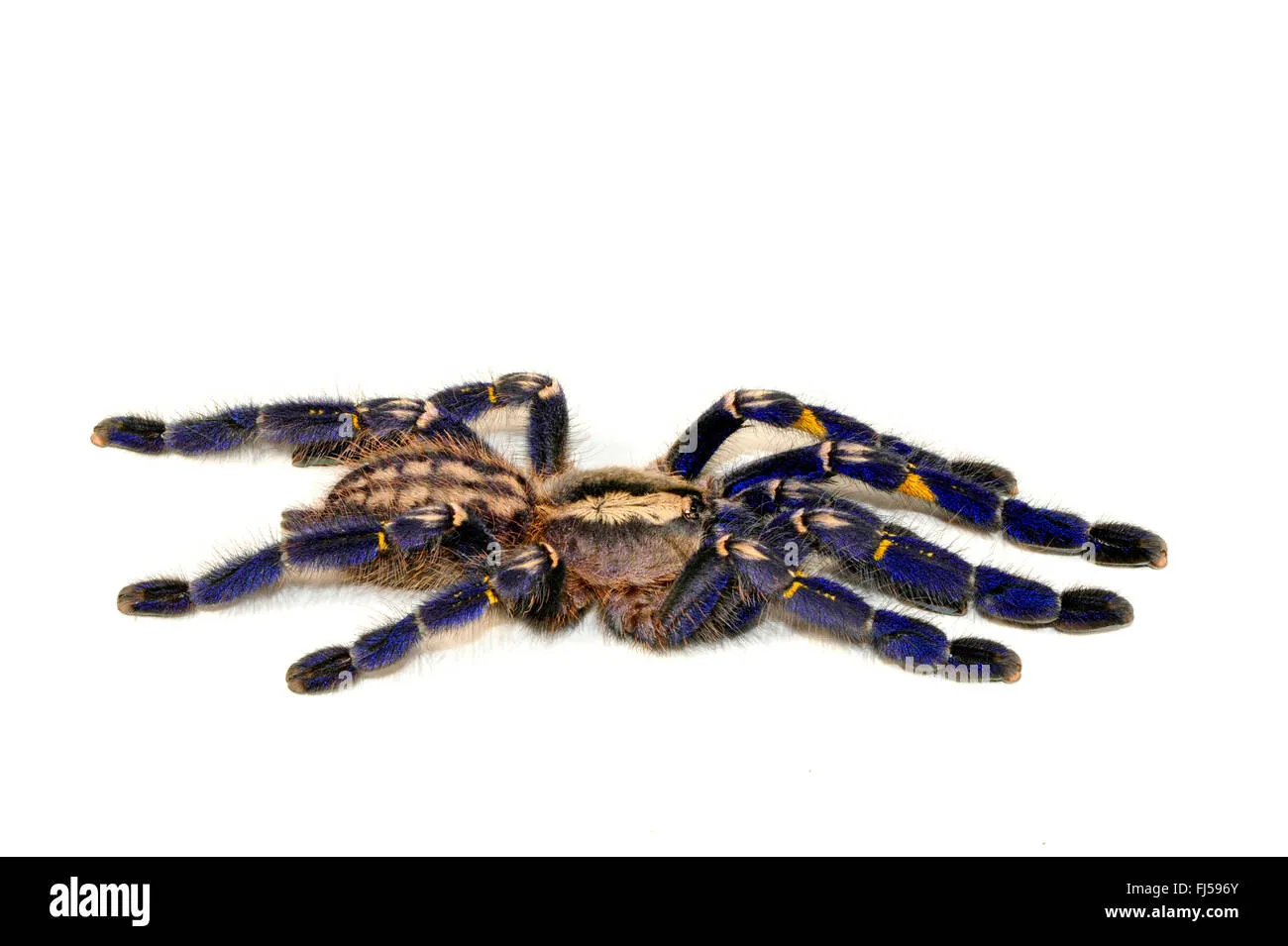
Gooty tarantulas are known to be defensive. If they feel threatened, they may display a threat posture, rearing up on their hind legs with their fangs bared. They can also flick urticating hairs from their abdomen as a defensive measure. While they are venomous, their venom is not considered medically significant to humans, but it can cause localized pain and discomfort. It is very important to handle them with care and respect their space.
Activity Patterns
Gooty tarantulas are primarily nocturnal hunters. They are most active during the night, when they venture out to hunt for food. During the day, they retreat to their webs, where they spend their time. Their activity levels are influenced by factors like temperature, humidity, and the availability of food. It is important to provide a suitable environment with the right light cycle to match their natural behavior.
Diet and Feeding Habits
The Gooty tarantula’s feeding habits are important for providing a suitable diet, both in the wild and in captivity. Providing the right nutrients is crucial for the health and longevity of the spider. Knowing the types of prey they consume in the wild helps replicate their natural diet and contributes to their overall well-being and growth.
Prey in the Wild
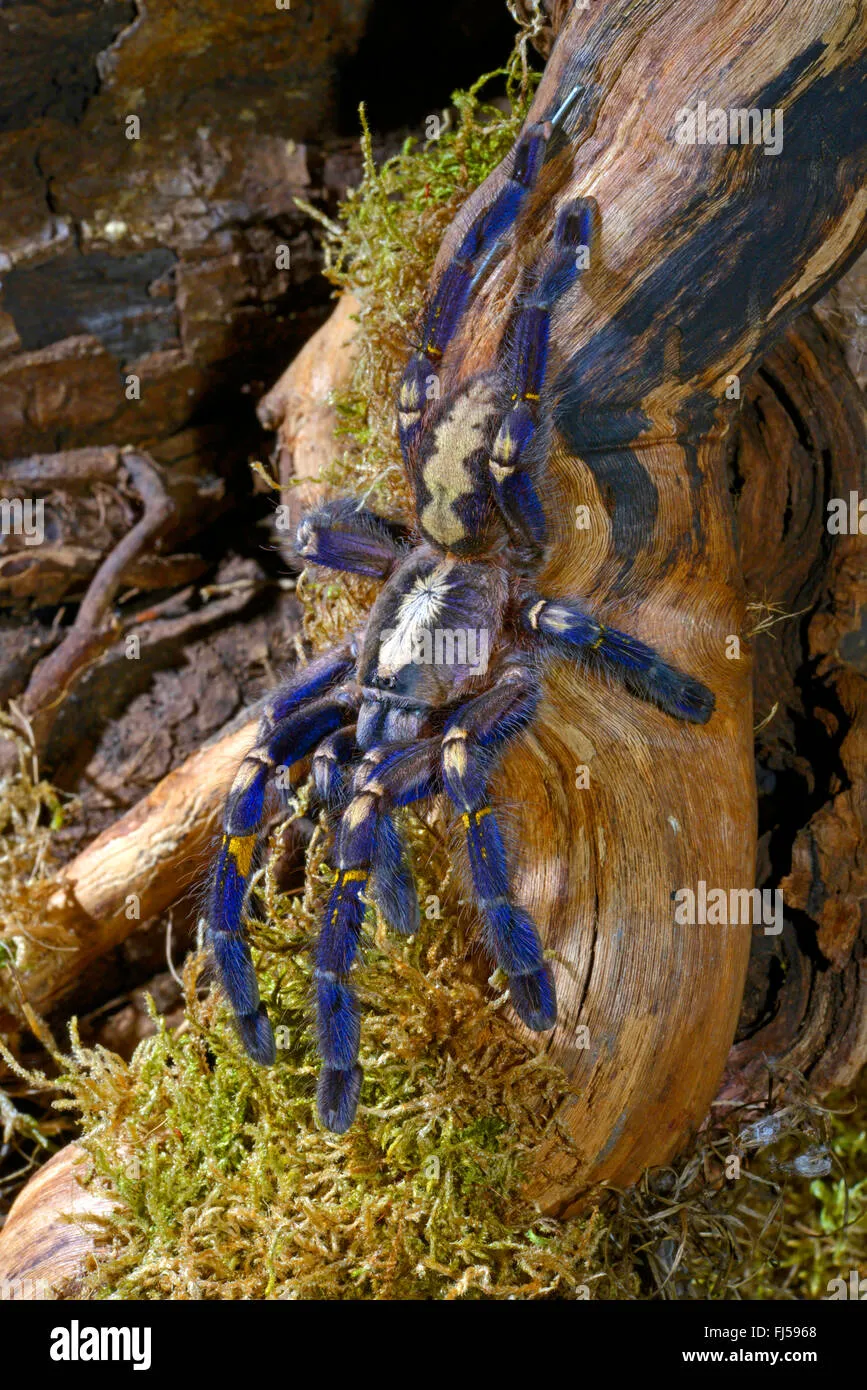
In their natural habitat, Gooty tarantulas primarily feed on insects and other invertebrates. Their diet consists of various types of insects like crickets, beetles, and moths, which are readily available in their environment. They are opportunistic hunters, capturing anything that wanders within their range. The availability of these insects is crucial for their survival, making the health of their natural environment essential for a healthy food supply.
Feeding in Captivity
In captivity, the Gooty tarantula’s diet consists mostly of insects, like crickets, roaches, mealworms, and other commercially available invertebrates. The size of the prey should match the size of the spider. As a general rule, the prey should be no larger than the spider’s body. Feeding frequency depends on the spider’s age and size. Young spiders should be fed more often, while adults can eat less frequently. It’s important to offer a varied diet to ensure the spider gets all necessary nutrients. Always remove any uneaten prey within 24 hours to avoid stressing the spider or the growth of mold and mites.
Lifespan and Life Cycle
Understanding the lifespan and life cycle of the Gooty tarantula is vital for prospective owners. This knowledge helps in providing appropriate care and creating a suitable habitat. The various stages of their life cycle have specific requirements, so knowing these details contributes to the spider’s health and well-being.
Molting Process
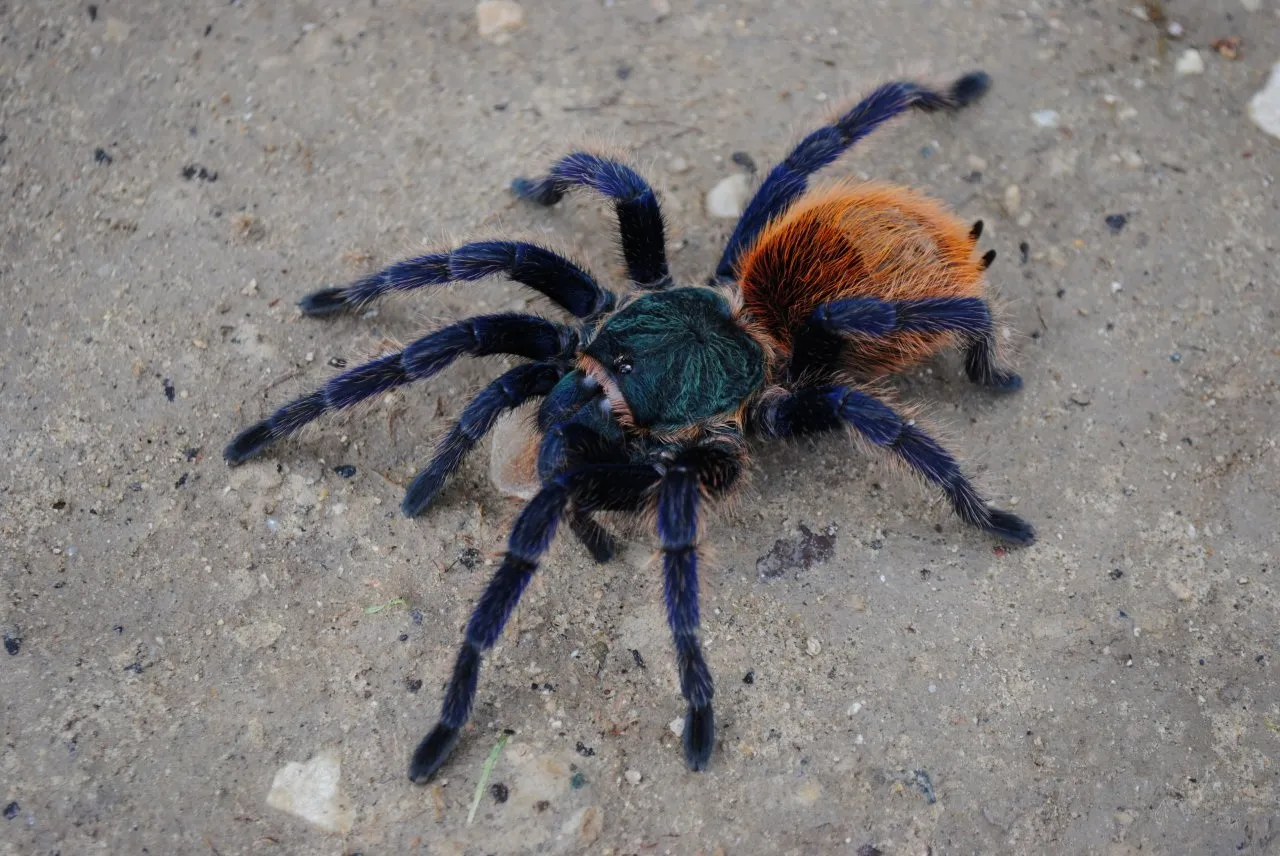
Like all tarantulas, the Gooty tarantula grows by molting its exoskeleton. This process involves shedding its old skin to reveal a new, larger one underneath. The frequency of molting depends on the spider’s age and how fast it is growing. Young spiders molt much more often than adults. During the molting process, the spider is vulnerable and should be left undisturbed. The molting process can take a few hours or even days. After molting, the spider’s new exoskeleton is soft, and it will take some time to harden.
Reproduction
Breeding Gooty tarantulas is relatively challenging and should be done by experienced keepers. After mating, the female will lay eggs in a silk egg sac. The female will then guard the egg sac, protecting it until the spiderlings hatch. The number of spiderlings in a clutch can vary. Raising the spiderlings requires proper care, including providing appropriate food and housing. Keeping the right conditions and practices is a crucial factor to ensure successful breeding and the health of the spiderlings.
Conservation Status
The Gooty tarantula faces various threats in the wild. These include habitat loss, the effects of climate change, and poaching. The awareness and implementation of protective measures are essential for the species’ survival. The conservation status helps to understand how vulnerable the Gooty tarantula is and what actions should be taken to protect it.
Threats to the Gooty Tarantula
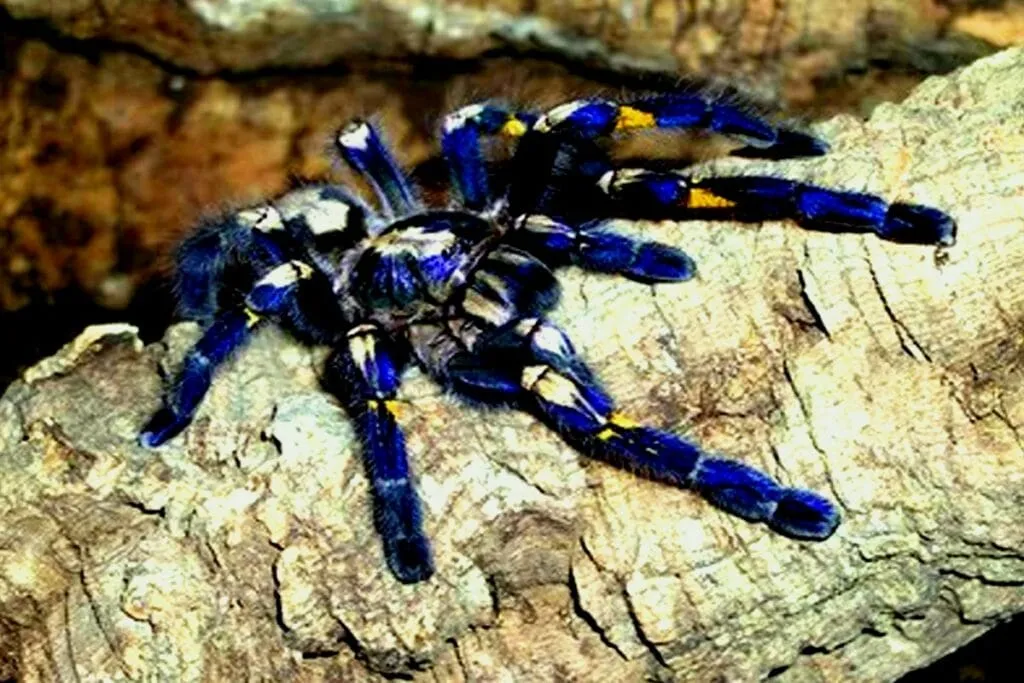
Habitat loss is a major threat, driven by deforestation, agricultural expansion, and urbanization. The limited distribution of this species makes it highly susceptible to localized threats. Climate change, with its influence on temperature and humidity, can disrupt the tarantula’s habitat, which is essential for survival. Poaching for the pet trade also impacts the population. The loss of even a few specimens can threaten a small population. The combination of these factors puts the Gooty tarantula at significant risk.
Conservation Efforts
Conservation efforts include habitat protection, anti-poaching measures, and raising awareness. The local community can also play a key role in protecting these tarantulas. Captive breeding programs are helping to increase the number of Gooty tarantulas. By supporting these programs, it is possible to ensure the species’ survival. The focus is on sustainable practices and educating the public about these beautiful arachnids.
Caring for a Gooty Tarantula
Caring for a Gooty tarantula can be a rewarding experience for experienced arachnid enthusiasts. Providing a suitable environment and meeting the spider’s needs are crucial for their well-being. Knowledge of their needs is a very important step for any potential owner. Here are the key aspects of caring for this stunning species.
Housing Requirements
Because Gooty tarantulas are arboreal, they require a tall enclosure. The enclosure should be at least 12x12x18 inches for an adult. It should have good ventilation to prevent the buildup of humidity and mold. A secure lid is essential to prevent escapes. The enclosure should also be furnished with climbing materials, such as cork bark, branches, and artificial plants, to simulate their natural habitat. Providing the right enclosure is vital to their health and for their ability to move around naturally.
Temperature and Humidity
Maintain a temperature of around 75-85°F (24-29°C). Use a heat lamp or under-tank heater, but make sure to monitor the temperature to avoid overheating. Maintain a humidity level of 65-75%. This can be achieved by misting the enclosure with water a few times a week. A hygrometer can be used to monitor humidity levels. Proper temperature and humidity are critical to the spider’s health, and this helps with molting and other processes.
Substrate and Enclosure Setup
Use a substrate like coco fiber, peat moss, or a mix of both. This provides a natural environment and helps to maintain humidity. The substrate should be deep enough for the spider to burrow if it chooses. Provide a water dish that is accessible. Arrange the decor to provide climbing areas and hiding spots. Keeping a well-designed enclosure enhances the spider’s well-being.
Feeding and Watering
Feed your Gooty tarantula appropriately-sized insects once or twice a week. Remove any uneaten prey within 24 hours. Provide a shallow water dish with clean water at all times. Ensure the water dish is easily accessible to the spider. Maintaining the right food and water levels are crucial factors in the health and survival of the tarantula.
Handling and Safety
Gooty tarantulas are not recommended for frequent handling. If handling is necessary, do so with extreme caution, and always have soft landing surfaces. Be aware of the spider’s defensive behaviors and avoid provoking it. Wash your hands thoroughly after handling the tarantula or any items from the enclosure. Knowing these safety measures is essential for preventing bites and other injuries.
Common Health Issues
Like all animals, Gooty tarantulas can be prone to certain health problems. Recognizing the signs and providing the right care can help to prevent and treat them. Regular care and attention are key to maintaining the health of the spider.
Identifying and Treating Illnesses
Look out for signs of illness, such as lethargy, loss of appetite, and abnormal behavior. Check for mites or other parasites. If you notice any health issues, consult a veterinarian experienced in treating invertebrates. Maintaining a clean enclosure and providing the right conditions can help prevent many health problems. Early detection and professional advice are vital for successful treatment.
Preventative Care
Provide a clean and appropriate environment for the Gooty tarantula. Feed the spider a balanced diet. Avoid overcrowding and ensure good ventilation. Regularly inspect the spider and its enclosure for any signs of problems. Take care of these health measures to extend the life of the spider and allow it to thrive in its environment.
